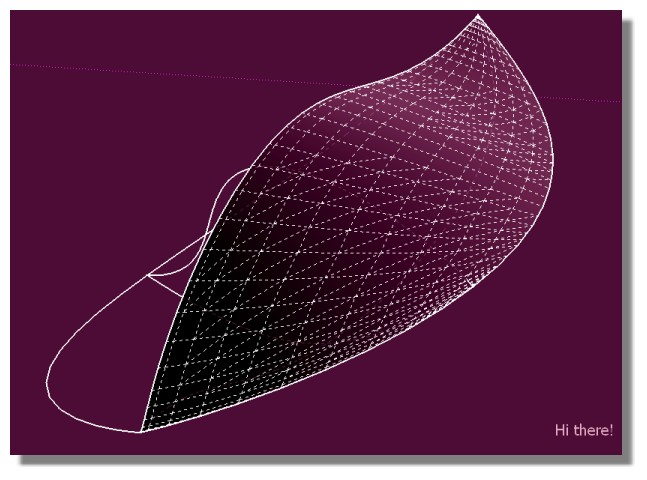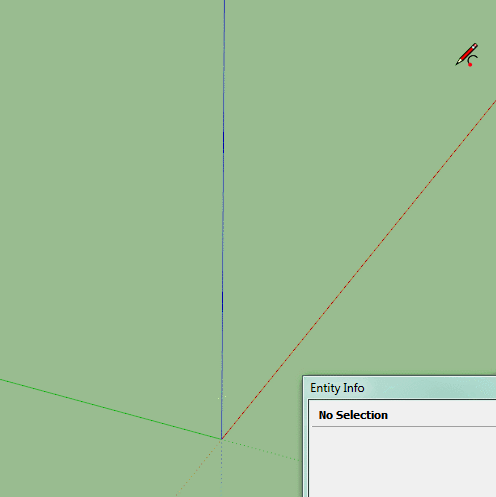How to create solid objects out of curved faces/surfaces?
-
I'm aware of one thread that's dealt with this, the issue was a bit different though.
I'm using TIG's Extrusion tools, most of the time and to be able to make solids out of them surfaces would be so cool. Its been a while since I was doing stuff in SU, so I forgot if there are tools for this....
Much appreciation for your suggestions!!!
Cheers,
OMAR
-
Try curviloft by Fredo6!


-
your surfaces need to be all in one group or component for a solid. The tiny pod you've made has many places especially at the ends that have holes and may have overlapping faces and other issues. It is so small it will be difficult to edit. I'd make it much larger so you can zoom in and fix it. Try ThomThoms Solid inspector. I tried Solidsolver on it, as well as CleanUp. They both destroyed it, so fix what problems you can by inspecting the geometry first. Has to be an airtight hull with no extra edges and faces. Oh and first you might reverse the backwards faces.
-
Cheers mateys, will give it a go.
-
Good. You might try a simpler prototype piece.
-
Ok, didn't repaired that piece yet, but lets say I have a nice ['working'] surface, how do I actually make it into a solid?
-
A surface can't be a solid it needs to have depth.
Tigs extrusion tools create surfaces, they need to be combined with other faces to create a solid.
Here is a quick example of one of the tools and how it needs other geometry for it to form a solid.

-
A manifold 'Solid' is a group or component-instance that contains only geometry [edges and faces].
The 'Entity Info' top bar will say 'Solid' if you have it Selected...
If that does not include the word 'Solid', then it is not...So that means no nested groups, instances of other things that are not edges or faces.
On top of that there is an overriding very strict rule...
Every edge must have exactly two faces.
This means -
No faceless edges.
No edges forming a shelf or hole in a surface.
No edges forming internal partitions [which result in an edge having three or more faces].
No otherwise seeming solid shapes sharing an edge [e.g. two boxes sharing an edge, will make that edge have four faces].So if your object has an in-perforate 'skin' [like a balloon]] and it has no internal partition faces, then it should report as a 'Solid'.
Unfortunately this is not foolproof either !
Some 3d-printers are confused by face-orientation.
So, make sure all of the Solid object's faces are consistently oriented 'outwards' - select one that is and use the context-menu item to match to it.
Use Monochrome mode to see the default materials for the faces.
Depending on your Style the default front-face color is typically off-white an the back-face a blue-gray.A 3d-printer can also receive a SketchUp 'Solid' and fail to print it for 'topological' reasons, IF the form 'pseudo-intersects' with itself - i.e. it is topologically impossible to create it in the 'real world', e.g. where part of it 'penetrates' another part of itself without actually intersecting or making a 'hole' - like a magician passing his arm impossibly through a brick wall.
To test for this, Edit your 'Solid' object and Select All, then use the context-menu to Intersect > with Selection, this will do nothing to the geometry if there is no 'penetration', so after exiting the Edit 'Entity Info' will still say it's a 'Solid'; however, if it has intersected itself there will now be extra edges made and some internal partition faces added, so in that case 'Entity Info' will no longer say it's a 'Solid', and you need to fix it...To fix a non-solid, you can Edit the object and use a combination of X-ray mode and temporary Section-cuts to access the interior and delete unwanted edges/faces. To add missing faces to holes over-draw an edge and the missing face should be formed.
Thomthom has SolidInspector which highlights non-solidity issues, he also has SolidInspector2 which attempts to fix them.
I also made SolidSolver which also tries to resolve them [including an 'orientation' and 'intersection' checker].
However, it's quite easy to make an object that cannot be fixed by an algorithm but where you can see the problem, so try a manual fix... and then use these tools for the awkward issues you can't readily see... -
Oh man, thank you so much for the lenghty reply.
Kudos.
Advertisement







